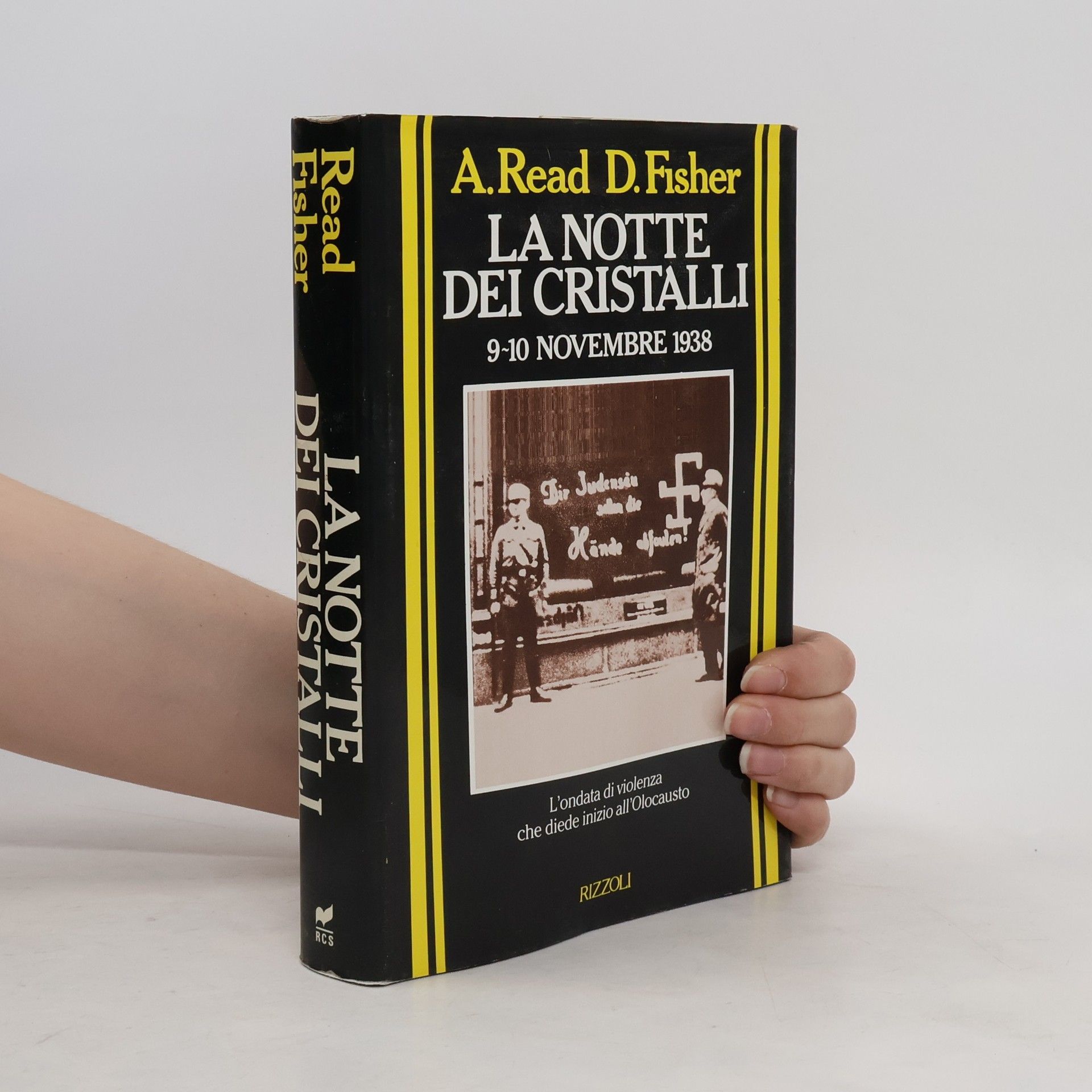Anthony Read Libri
Questo autore si è concentrato principalmente sulla fiction televisiva britannica dagli anni '60 fino alla metà degli anni '80, sebbene abbia occasionalmente contribuito a produzioni televisive fino al 1999. Negli anni '80, ha intrapreso una seconda carriera come autore di libri, concentrandosi in gran parte su storie della Seconda Guerra Mondiale. Dal 2004, scrive regolarmente narrativa in prosa, principalmente sotto forma di un rilancio del suo popolare show televisivo del 1983, The Baker Street Boys.







In this chronological narrative, the author shows how the personalities of Hitler's inner circle developed and how their jealousies and constant intrigues affected the regime, the war and Hitler himself. It focuses on Goring, Goebbels, Himmler, Bormann, Speer and Ribbentrop.
The narrative captures the tumultuous transition to independence in India on August 14, 1947, marked by horrific violence between Hindu and Muslim communities. It explores the decline of the British Raj, detailing the events leading up to independence and the roles of influential leaders like Gandhi, Nehru, and Jinnah. The authors provide a vivid and comprehensive account of the era's complexities, highlighting the conflicting approaches of British officials as the situation escalated into chaos.
From the pomp and glitter of the 1936 Olympics to the apocalyptic battle to capture the ruined capital of the Nazi Empire, The Fall of Berlin presents a kaleidoscopic portrait of one of the world's greatest cities caught between the lunacy and cruelty of its leaders and the brutal determination of encircling Soviet armies. The authors have delved into archival research, diaries, and memoirs, and conducted numerous interviews to recreate through brilliantly detailed vignettes the story of Berlin and its resilient inhabitants: the soldiers and ordinary citizens pounded by Allied bombing but maintaining their gallows humor; the endless procession of refugees; the 5,000 Jews who foiled the Nazi's rabid attempt to "purify" the capital; people like Dietrich Bonhoeffer who gave their lives in heroic anti-Nazi resistance while film stars and the well-connected lived in precarious luxury; the Third Reich's leaders jockeying for power in Hitler's underground bunker even as a ragged army of children, invalids, and old men confronted Soviet tanks in the rubble above; and of course, Hitler himself, trapped beneath a city he hated, waiting for the miracle promised him in horoscope readings. Not since Is Paris Burning? has a book so vividly evoked the daily struggle for survival and dignity in the nightmarish center of total war.
During the night of November 9, 1938, the Nazis unleashed a reign of terror in which thousands of Jews were killed, beaten or taken to the camps. Here is the first major study of that horrible night of broken glass based on newly discovered documents and eyewitness accounts. 8-page phot insert.
The book delves into the dynamics of power among Adolf Hitler's closest lieutenants, presenting them as both individuals and a collective force within the Nazi regime. It highlights the fierce competition for succession among key figures like Goring, Goebbels, and Himmler, along with rivals such as Bormann, Speer, and Ribbentrop. Through a chronological narrative, it explores how their personal ambitions, jealousies, and intrigues not only shaped the regime's brutal actions but also influenced the course of World War II and Hitler's own fate.
Tells the story of Berlin both through political events and through a vast range of extraordinary personalities: politicians, soldiers and businessmen, artists, writers and performers, and the often bizarre Hohenzollern princes who ruled the city before 1918.
The World on Fire: 1919 and the Battle with Bolshevism. Anthony Read
- 379pagine
- 14 ore di lettura
Set against the backdrop of the 1919 Paris Peace Conference, the narrative explores the complexities of post-World War I diplomacy as Western leaders sought to curb German militarism while grappling with the rise of Bolshevism. The book delves into the paradox of striving for a democratic peace in a world increasingly threatened by new forms of conflict, particularly terrorism, highlighting the challenges of reconciling ideals with harsh realities in a rapidly changing political landscape.
Set against the backdrop of post-World War I, the narrative explores the rise of Bolshevism and its global impact following the Russian Revolution of 1917. As the Allied powers attempted to quash this new ideology through intervention in Russia, a wave of revolutions and counterrevolutions erupted across Europe and America. The book delves into the ensuing chaos, including widespread strikes and the Great Red Scare in the U.S., highlighting the intense struggle against terrorism and the challenges to democracy during a pivotal year in history.